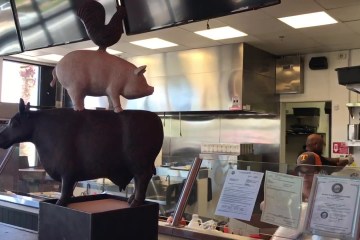This year has marked a critical juncture for the restaurant industry. To remain competitive, restaurants must balance innovation with resilience, investing in people, processes and digital tools that align with a rapidly evolving market landscape.
As we enter key holiday and high seasons, here are four trends and opportunities to watch for the rest of the year.
1. BUILD M&A READINESS IN A SLOWER MARKET
Mergers and acquisitions in 2025 have proven slower than expected, likely due to macroeconomic headwinds like trade uncertainty and inflation. There have been a few notable transactions — including Thompson Street Capital Partners’ recent acquisition of fast-growing Bubbakoo’s Burritos — but many deals have involved acquisitions of distressed or bankrupt chains, suggesting a more opportunistic rather than broadly proactive market. Still, dealmaking could resume when the underlying macroeconomic uncertainty subsides.
Restaurant operators who are interested in an eventual exit can begin shaping an attractive deal now. For example, it’s a good idea to assemble a team of bankers, attorneys and accountants with M&A and tax experience. They’ll be able to provide legal and operational support to attract the right buyer. For family-owned operations, stakeholder alignment regarding a potential sale is crucial, and consolidating ownership now can help present a more straightforward picture for buyers down the road.
2. UNDERPIN TECH ADOPTION WITH ROBUST CYBERSECURITY
In 2025, embracing technology to optimize growth is an industry norm. Bank of America’s 2025 State of the Restaurant Industry report found operators are adopting various technologies to improve the digital customer experience (59 percent), support revenue generation (56 percent) and improve business analytics (44 percent). Additionally, a Toast survey found that 52 percent of U.S. restaurant decision-makers are leveraging artificial intelligence (AI) to do things like optimize menu performance (40 percent), enhance benchmarking (38 percent) and analyze business performance (35 percent).
However, operators need to be mindful of how technologies like AI can be misused. Savvy fraudsters may deploy chatbots and large language models — tools also used by legitimate businesses — to craft highly convincing requests to defraud restaurants.
In Las Vegas, especially with many resorts, the need for strong cybersecurity measures is crucial as cybercrimes against hospitality companies have become more frequent.
3. ADAPT TO EVOLVING WORKFORCE CHALLENGES
Workforce disruptions dominated the early 2020s, and while this phenomenon transcended sectors, it was particularly acute within food services, leading to operational shifts and policy adjustments, including minimum wage increases in many states, including Nevada.
Today, the industry is still grappling with attracting and retaining staff. According to the National Restaurant Association’s (NRA) 2025 State of the Restaurant Industry report, table-service restaurants are still 233,000 positions below pre-pandemic levels.
With labor costs expected to be an ongoing issue, operators may invest in upgraded systems and automated processes that reduce their reliance on workers. Using self-service kiosks and automated drive-through interfaces, for example, reduces the need for front-of-house staff. And to combat costly turnover, some restaurants have offered workers benefits such as retirement saving programs, tuition reimbursement and flexible wellness options.
In fact, as of last month, all Nevada businesses with six or more employees that have been operating for more than 36 months are required to provide a retirement plan, adding to the critical need for increased workforce benefits.
4. EMPHASIZE VALUE DURING INFLATIONARY PERIODS
Confronted by rising labor and food costs, many restaurants had to raise their prices to remain profitable, forcing consumers to spend more for comparable meals. Despite that, they haven’t abandoned dining out.
In fact, 90 percent of adults told the NRA they enjoy dining out — they’re simply choosing more convenient, less expensive options. Findings in a Bank of America Institute publication support this trend. In recent months, people have been spending more at restaurants than at supermarkets. Surprisingly, when asked how they’re saving money, many said they’re cutting back on restaurant spending. However, the data shows that in June, households actually spent more at full-service restaurants and ate out more often.
Ultimately, younger consumers are driving this shift, opting for quantity over quality due to growing financial pressures. To effectively target this demographic, 47 percent of restaurants are implementing discounts, deals or value promotions, per the NRA. Operators should periodically review and adapt their pricing and promotional strategies to cater to value-driven diners.
The need for implementing discounts has especially increased on the Las Vegas Strip, where many businesses are now offering special deals specifically for locals to balance out declining visitor levels.
Providing a great customer experience will always be a timeless best practice, but the latter half of the decade also demands agile adaptation to the dining landscape’s new realities. Restaurant operators should continue to focus on these essentials through employee growth and retention and tech adoption while building a strong cybersecurity perimeter.
JP Dhillon serves as senior vice president, business banking market executive, Bank of America Las Vegas. Cristin O’Hara is the managing director and restaurant group head, Bank of America.









